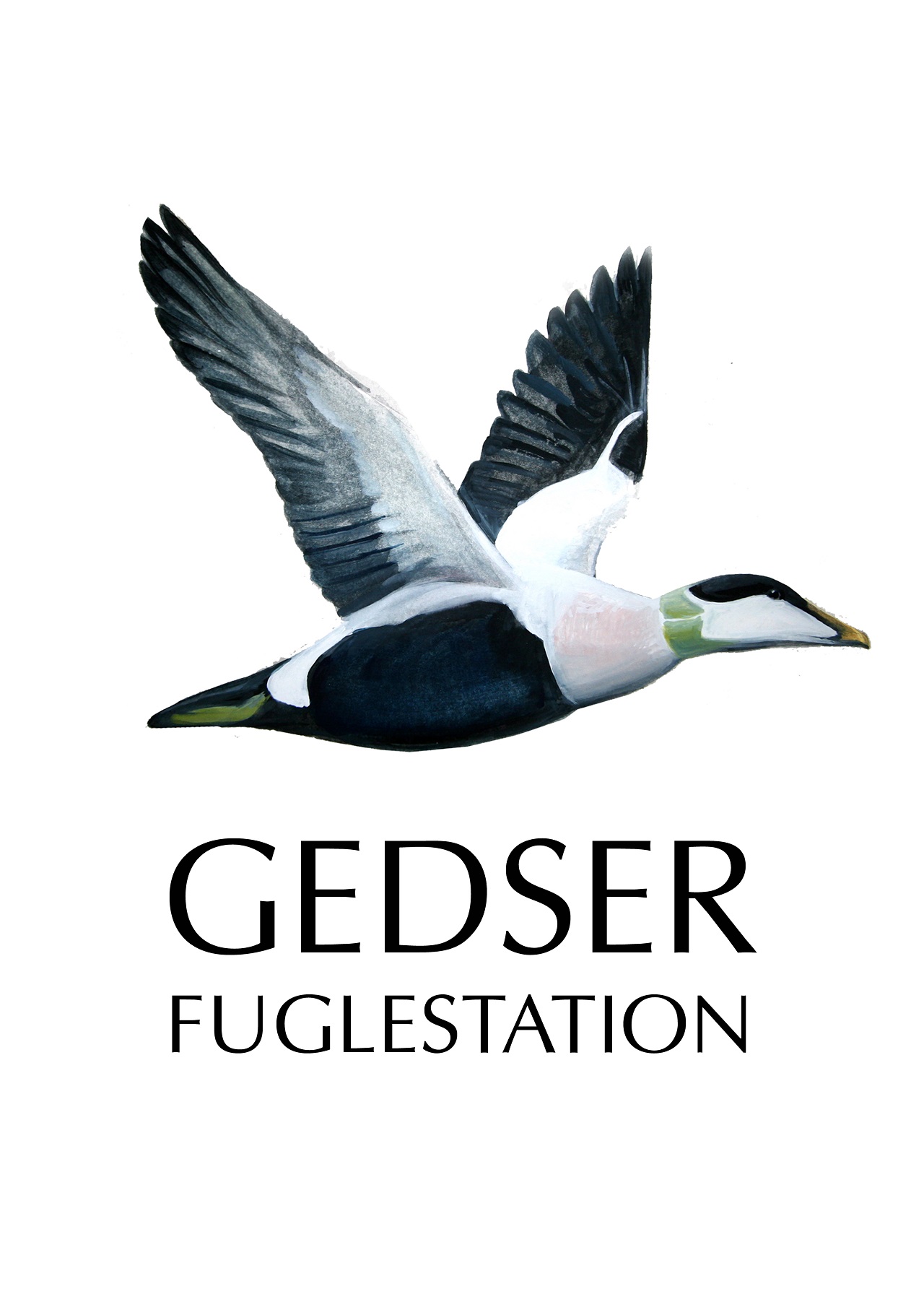Gedser Fuglestation Blog
Her på Gedser Fuglestations blog bringes korte nyheder i dagbogsformat om hændelser på fuglestationen.
Fair Stood The Wind
According to Shakespeare the wind stood fair for France so Henry V's army could cross the English Channel and seek battle with the French. Today the wind stood fair from the east making great billows in the nets which, unsurprisingly, the birds avoided. Indeed there were not many birds in the ringing garden. Though many passerines were seen flying over the garden towards Germany, and who knows, maybe onto France too.
Consequently the catch was small - ten birds of six species. Unfortunately that maybe the trend for the next few days.
Of note were the three Pied Flycatchers, two juveniles and one adult. The adult had completed wing moult but some tail feathers and tail coverts were still being replaced and it looked suspiciously like a female - will we ever know? Hopefully she will be re-trapped somewhere in her travels and we'll then find out.
Ringing totals:
Robin/Rødhals/1; Icterine Warbler -/1; Lesser Whitethroat/Gærdesanger-/2; Blackcap/Munk 2/-; Chiffchaff/Gransanger 1/-; Pied Flycatcher 3/-. Totals: 10 (7/3)
Migration observations at Gedser Odde: Hello, Lara here – the newest member of the team at Gedser Fuglestation. Today was my second day out on the migration counts at the southernmost tip of Denmark. The dramatic lightning storms of the previous day had abated, with a relatively strong wind blowing white caps on the waves below the point.
Never having had to identify birds several miles out, against the rising sun no less, is certainly a challenge, but luckily, I have some very good teachers in the resident migration expert Ole Friis Larsen and a couple of other birders who visit each morning to track migration, who are more than happy to point out birds I’ve not previously come across, and explain their identifying features.
Having previously relied on signs such as song, colour, habitat and movement patterns, abruptly switching to such “macro” indicators like size, shape, flight pattern and, if discernible, colour bars or blocks on the wings or belly is a real challenge.
Overall numbers were up by a couple of hundred from yesterday, with just over a thousand birds spotted passing by either above the waves to the south or rising up from behind us over the fields to launch themselves from land into the prevailing winds. Something like 30km separates the Gedser cape from the next landmass of Germany, and it really is a sight to behold watching various seabirds, passerines and raptors pass us by over the sea.
On a typical birding outing, I might have expected to see one or two small birds of prey, perhaps a Kestrel or Sparrowhawk. Today we saw 71 Sparrowhawks (Accipiter nisus. Spurvehøg), 3 Kestrel (Falco tinnunculus, Tårnfalk), a couple of Merlins (Falco columbarius, Dværgfalk) and a Red-footed falcon (Falco vespertinus, Aftenfalk), the latter producing a rush for binoculars or cameras and much gesticulating amongst the birders present. Even for seasoned birders, it seems, this bird is something special. Watching it glide, seemingly unconcerned, above us, undulating in the wind whipping up from the cliffs, was a beautiful moment indeed.
Further out from the shore (often much further out), several hundred Wigeon (Anas Penelope, Pibeand), Teal (Anas crecca, Krikand), Pintail ducks (Anas acuta, Spidsand), Common and even a few Velvet Scoter (Melanitta nigra, Sortand, and Melanitta fusca, Fløjlsand) flew rapidly past, helped along by the fast winds. Two Arctic skuas (Sterorarius parasiticus, Almindelig Kjove) were spotted far out on the horizon, along with several Common and Sandwich terns (Sterna hirundo, Landsvale, and Thalasseus sandvicensis, Splitterne). The terns certainly hold a particular captivation, in their rapid plummets to the waters’ surface, emerging soon after their dive – with or without a fish – for a quick whole-body shake to be rid of excess moisture, before returning to their perambulations about the skies. Those individuals on active migration are clearly set apart from those simply foraging by the active directness of their flight patterns, far less ambulatory than their (for now) resident counterparts.
Of passerines, only a couple of species were noted departing – 174 Swallows (Hirundo rustica, Landsvale), 30 White wagtails (Motacilla alba, Hvid Vipstjert), and a single House martin (Delichon urbicum, Bysvale). It is truly astonishing to know that these small and fine-boned creatures will fly without rest for several hundred (if not thousands) of miles before touching land again. The small flock of Tree sparrows (Passer montanus, Skovspurv) that inhabit the shrubs around the point almost seemed to laugh at these intrepid travellers.
As a final note, I’d like to make special mention to the single Nutcracker (Nucifraga caryocatactes, Nøddekrige) who appeared near the end of our five-hour session this morning. He (or she) kept us all company yesterday too, leaving his perch atop the tree 75m from the cliffs no less than 12 times in three hours to test the winds and consider migrating….it did not seem like today was his day either, so perhaps we will see him again tomorrow and he will, finally, attempt the long journey south.
Sparrowhawk/Spurvehøg, Kestrel/Tårnfalk, Merlin/Dværgfalk, Red-footed falcon/Aftenfalk, Wigeon/Pibeand, Teal/Krikand, Pintail/Spidsand, Common scoter/Sortand, Velvet Scoter/Fløjlsand, Arctic skua/Almindelig Kjove, Common tern/Fjordterne, Sandwich tern/Splitterne, Swallow/Landsvale ,White wagtail/Hvid Vipstjert, House martin/Bysvale, Nutcracker/Nøddekrige
People at the station: Ole Friis Larsen, Chris Sharp, Lara Winsloe


